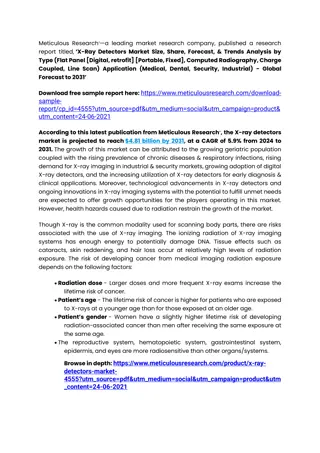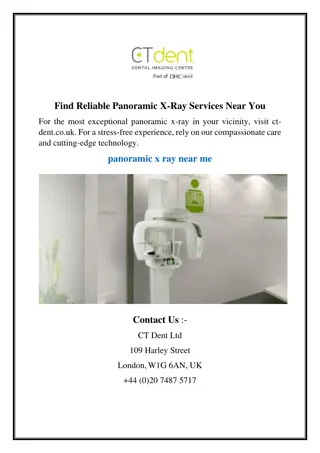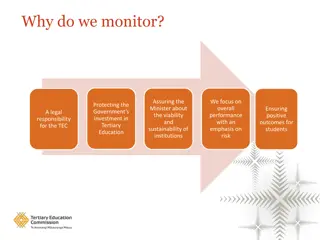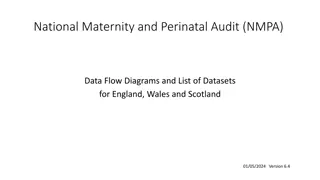
Mastering EKG and X-Ray Billing
Learn the importance of EKG and X-ray billing, understand billing requirements, reimbursement details, interpretation essentials, elements to include, what not to write, and what to write in EKG reports. Enhance your knowledge to effectively bill for EKG services.
Download Presentation

Please find below an Image/Link to download the presentation.
The content on the website is provided AS IS for your information and personal use only. It may not be sold, licensed, or shared on other websites without obtaining consent from the author. If you encounter any issues during the download, it is possible that the publisher has removed the file from their server.
You are allowed to download the files provided on this website for personal or commercial use, subject to the condition that they are used lawfully. All files are the property of their respective owners.
The content on the website is provided AS IS for your information and personal use only. It may not be sold, licensed, or shared on other websites without obtaining consent from the author.
E N D
Presentation Transcript
EKG and X-Ray Charting and Billing Jessica Bod, MD
Objectives Understand the importance of EKG and X-ray billing Describe the components necessary to bill appropriately
EKGs- Overview EKG interpretation is a billable service (CPT code 93010) Reimbursement depends on the payer s policy and contract with the provider Reimbursement requires appropriate interpretation documented by the physician
EKGs- They add up Medicare EKG billing generates $8.64 per EKG How many annual visits to your ED? What percentage get EKGs? What is the annual revenue generated by EKGs?
EKG Billing Requirements An order must be placed Documentation must support the need for the EKG A separate signed retrievable report must be available The report must contain an interpretation
EKGs- Interpretation Appropriate documentation requires interpretation of the EKG Review without interpretation is insufficient Interpretation must be done in a separate or discrete area within the chart
EKGs- Interpretation Three of the following elements must be included Comparison to previous EKGs Rate Rhythm Axis Intervals ST segments
EKGs- What Not to Write EKG normal I reviewed the EKG Non-diagnostic EKG Negative EKG
EKGs- What to Write Begin with: EKG Interpretation Normal Sinus Rhythm at a rate of 83, normal PR and QRS intervals, lateral T wave inversions noted on prior EKG Atrial Fibrillation at a rate of 128, right bundle branch block, no ischemic ST changes, no prior EKG available for comparison
Bill for this EKG Normal Sinus Rhythm at a rate of 75. Normal PR and QRS intervals. Normal ST segments. No changes when compared to previous.
Bill for this EKG Sinus Tachycardia at a rate of 130. Normal PR and QRS intervals. Diffusely flattened T waves without ST elevation or depression. New tachycardia when compared to previous.
EKGs- Turf Wars with Cardiology Any procedure or service can be rendered by any qualified physician Reimbursement should be for the interpretation that determined treatment This may vary by payer policy or hospital contractual agreements
X-rays- Overview Ability to bill for x-ray will be highly dependent on individual departmental policy and payer policy Utilizes the CPT 26 modifier to indicate a professional service has been rendered rather than a technical service Reimbursement requires appropriate interpretation documented by the physician
X-rays- 26 Modifier Used when the professional component of a procedure is separate from a technical component Applies when the physician interprets a diagnostic test without performing it personally Ex: Chest x-ray interpretation
X-rays- Billing Requirements A complete written report must be provided The report should be similar to that prepared by a specialist in the field
X-rays- Interpretation CMS mandates the inclusion of: Relevant clinical issues Comparative data Study Findings
X-rays- Interpretation May also include: A description of procedures and materials Limitations to the interpretation Clinical impression, conclusion or diagnosis
X-rays- Turf Wars with Radiology Any procedure or service can be rendered by any qualified physician Reimbursement should be for the interpretation that determined treatment This may vary by payer policy or hospital contractual agreements Payment to both physicians may be made if the expertise of the second physician is beyond that of the first and is medically necessary
Conclusions EKGs and X-rays are billable procedures generating significant revenue for emergency departments They require separate reports documenting the emergency physician s interpretation of the study Hospitals may have individual contracts that determine which department bills for certain studies






















